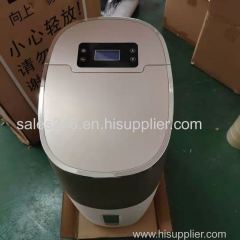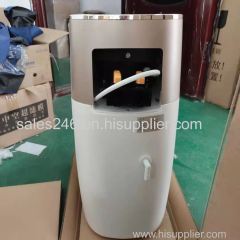


Murfiltc Water softener 35000grains for 1-4 family household use
| Min. Order: | 1 Set/Sets |
|---|---|
| Trade Term: | EXW |
| Payment Terms: | T/T |
| Supply Ability: | 100000000 |
| Place of Origin: | Shanghai |
Company Profile
| Location: | Shanghai, China (Mainland) |
|---|---|
| Business Type: | Manufacturer |
Product Detail
| Model No.: | Soft-1t |
|---|---|
| Means of Transport: | Ocean, Air |
| Brand Name: | Murfiltec |
| Grain Capacity: | 35000grains |
| Hardness Removal: | 95grains per gallon |
| Iron reudction: | 3 parts per million |
| Resin tank size: | 1017 |
| Production Capacity: | 100000000 |
| Packing: | cartons |
| Delivery Date: | 3-10 days |
Product Description
Introduction to Hard Water and Water Softeners
A water softener removes the calcium and magnesium ions that make water hard by replacing them with salt/sodium via ion exchange. Look for a National Sanitation Foundation (NSF)-certified water softener with a system monitor. This will indicate when salt is low and ensure you maintain optimum levels for soft water.
Water Softener FAQ
What does the grain capacity of a water softener mean?
The rated capacity of a softener is the maximum number of grains of water hardness the unit can remove prior to regeneration.
How is the hardness of water measured?
The hardness of water is measured in grains per gallon (gpg). One grain of hardness is equal to 1/7,000 pound of rock. Your municipal water supply may measure water hardness in milligrams (mg), liters (L) or parts per million (ppm). One gpg is equal to 17.1 mg/L or 17.1 ppm.
How do I determine my water hardness?
You can call your municipality if you use city water, or purchase a water test kit.
How do these numbers impact my water softener purchase?
To determine the appropriate water softener size for your home, multiply the number of people in your home by the gallons of water they use each day (80 gallons per person is the average). Multiply that number by the grains of hardness in your water to figure out how many grains need to be removed each day. Then, shop for a water softener equipped to handle the load. Most four-person households use a 33,000-grain unit.
What is regeneration?
Over time, the resin bed inside the water softener becomes coated with hardness particles. When this happens, the softener goes into its regeneration cycle. During regeneration, the salt in the tank is mixed with incoming water to rid the resin bed of these hardness particles. After regeneration, the unit is ready to provide a steady stream of soft water to your home again.
What type of salt should I use?
A clean pellet or nugget-style salt is recommended. Other types of salt are available for specialized applications.
Does the recharge water from the softener harm my septic system?
No, water softener recharge water won't affect septic system operation or drain field soil percolation.
How much water does each recharge use?
It uses about as much water as it takes to wash a load of laundry.
How much electricity does a water softener use?
It uses about as much as a digital alarm clock.
Tip
All hot water should be softened. Most people leave cold taps hard to reduce salt intake in drinking water and cooking. If you're on a restricted sodium diet, check with your physician before installing a water softener in your home.
Shop Water Softeners
Shop Water Softening & Filtration Accessories
Shop Replacement Water Filters & Cartridges
You'll need two 1-inch national pipe thread taper (NPT) female connectors and enough tubing to connect from the water softener to your existing plumbing. You may have copper, polyvinyl chloride (PVC), chlorinated polyvinyl chloride (CPVC), steel or cross-linked polyethylene (PEX) plumbing. Each of these plumbing types may require different materials and tools for installation.
A drain is necessary for the regeneration or recharge process. About 10 feet of drain tubing is supplied, but if your drain is farther than 10 feet away, you need to purchase enough 1/2-inch tubing to reach your drain. The drain shouldn't be more than 30 feet away from the softener. The drain line shouldn't be elevated more than 8 feet above the floor.
The power cord (transformer) needs to be plugged into a 110-volt continuous live outlet. The unit comes with a 10-foot power cord.
Water Softener Installation Requirements
Here are three things to keep in mind when installing a water softener:

